Summing Up: Quad Launches Studio Q1
MIDTOWN, MANHATTAN: Blink, and you might miss it. The action in the NYC studio scene right now is raging fast and furious, with noteworthy new rooms opening up at a pace almost too fast to keep track of.
The latest big-time addition to the cityscape: Q1 at Quad Recording Studios. The flagship revision to this storied facility, Q1 represents the latest evolution in NYC’s world-class studio offerings for artists, producers, mixers, and songwriters in search of new creative options and inspiring surroundings.
With its arrival, the fascinating timeline of 723 7th Avenue gets yet another update. The seeds of this new room were sown in Quad’s 2010 sale of its 8th floor — emerging lean and mean, Quad President Ricky Hosn and his staff embarked on a $500,000 overhaul of its remaining territory, the 3500 sq. ft. 10th floor.
Ask Hosn about the current NYC studio climate, and he’ll readily admit that navigating the scene is more challenging than ever. “It’s kept us on our toes,” he says, “and restructuring the place was essential for us. Quad was five floors at one point, but the market won’t sustain that anymore. We had to reinvent ourselves, to move in step with a changing of the times — we feel we have the right formula now.”
Making the Update
The results of the remake are as easy to see as they are to hear. Visitors step off of the elevator directly into the atmospheric Qlounge, complete with a pool table, bar and a carnivorous fish tank (show up for feeding time – if you dare). Those familiar with the powerful audio pod previously known as Studio D – now Q2 – will be happy to know that that room remains intact, although it is equipped with a new lounge that flanks it to the left.
Also with a brand new lounge is the latest addition Q1, a space designed to make all kinds of waves. At 320 sq. ft., the comfortable Larry Swist-designed control room may seem slightly compact, but once the advanced functionality and exhilaratingly loud and accurate acoustics have been experienced, size no longer matters.
To the contrary, Q1 is already making a big impact with its extreme flexibility, both in workflow and capabilities. “In the past a studio would have a mix room, a production room, a tracking room,” Hosn explains. “We said, ‘Let’s put all three together, and make a room where any producer, engineer or artist can walk in and feel at home.
“That’s the approach we took. There’s a producer’s desk in the back where you can sit, listen accurately, and work. The producer or artist is never sitting too far from the controls and the engineer. It’s geared around the artist and production, and that’s the trend we see: A lot of producers are handling the whole project, and we built it around that reality. It’s the same principle we had with creating Studio D five years ago, but we made this a bigger format, with better gear and a much bigger live room, so you really can handle any kind of music project.”
Outfitted with oiled walnut wood appointments, Swist’s pleasing design employs generous views to the outside and the adjacent control room, providing Q1’s users with an expansive experience while they work. “Windows were essential: You’re in Times Square so take advantage of it,” Hosn says. “Both the live room and control room have windows out to Times Square, and the window between the live and control room is bigger than most windows in the city. You feel like you’re right next to the artist — it just feels like one big room between the control and live room.”
Once clients get settled into the welcoming environment, things get increasingly interesting. While the ICON control surface won’t raise any eyebrows, the Pro Tools HD 4 Accel 9.0 system is to be expected, and the comprehensive list of plugins is de rigueur, where the signal can flow from there is unique: three different summing mixers – a Chandler 16 x 2, SSL X Logic 16 Channel, and a Manley 16 x 2 Custom mic/line – flanked by a who’s who of outboard gear.
“We had the opportunity to go with a typical analog desk, but we said, ‘Let’s do something different and get creative with the equipment,’” Hosn says. “We focused on summing, with three summing mixers to give the engineer more of a choice for the sound. This is the best of the summing world: Chandler comes from the old EMI consoles, SSL is the industry standard, and we have something different in the Manley mixer, which is amazing on vocals. As far as outboard gear, we went for — not vintage, but brand new — Chandler, GML, SSL, Manley EQ/compressor, and of course the Universal Audio units like the 1176 and LA-2A.”
For monitoring, a pair of Augspurger Dual 15” main monitors, custom built by Professional Audio Design, supplemented with 2 subwoofers, throws down the gauntlet for mega volume listening in NYC. In a recent visit listening to hip hop, pop and rock through these speakers in the tight, well-tuned room was a sonically exciting experience, revealing extremely high levels of full-frequency detail cleanly across the stereo field. For those who need to craft, check or just feel their mixes at massive SPL’s, Q1 may well become a mandatory stop on the way to the mastering lab.
Design Assignment
According to Swist, whose credits include Tainted Blue, Premier’s Studio E, Eastman School of Music, SUNY Fredonia, and The Lodge, the directive for Q1 was to create a warm but contemporary look and feel. “We used a lot of sharp lines, and the sound has got to be there — the acoustics need to be spot-on because people are going to mix in there,” Swist notes. “The challenge today in an NYC facility is that you don’t have the cubic footage you used to, so you have to spend more time in the design phase ensuring that the room will translate in the outside world, especially with bass response. It also has to have a broad sweet spot. It’s easy to make it work right in the middle, but to make the room work for the producer standing next to you or in the back is a challenge.
“Most live rooms have an idiosyncratic quality to them: The great engineers find its good characteristics, the right places for the drums and mics, and use gobos,” Swist continues. “My approach is to keep it a relatively active room, and then you can come down from there. So Q1’s tracking room sits in a relatively live place: It’s good for drums, but reverb times can be cut down with gobos and more acoustical absorption. I think the live room is larger than most. It’s not huge, but then again most people are just putting in booths in a production suite today. This offers the ability to actually track a band. A lot of those rooms are going away, and this fills that void.
“Overall, the studio is something fresh, and you do have a really good initial emotional reaction to it. It’s positive creatively, and that’s what we were striving for. It’s like, ‘Wow, it feels nice and it sounds nice. We have a good combination there.’”
Under the Hood
Cleanly integrating Q1’s three analog summing mixers and outboard gear with the ICON was no plug ‘n’ play operation. “We wanted to do something focused on an easier workflow, quick mix recalls for engineers and easy accessibility for producers,” states Alessio Casalini Operations Manager and Chief Tech for Quad Studios NYC/Halo Records. “This improves the possibility to change little things fast and maintain top quality in terms of outboard gear and technical components like patchbays, wires, and connectors.
“The wiring of the whole studio and the patchbay’s layout were designed by Glenn Baughmann and myself,” continues Casalini. “We brainstormed in order to find the best result to yield a simple layout, one noted example being: The three summing mixers normalled to the multitrack outs, and the outs of those mixers normalled to the Stereo inputs of the (ICON) XMon (monitoring controller), and dedicated computer output to the XMon. Even the TV is on the bays.
“We started with the best quality wires and connectors, and used only two DB25 patchbays for connections with XMon and audio interfaces. All the other patchbays are soldered by hand and split to DL connectors panels.”
Connectivity in Q1 is obsessive: Every wallplate in the live room, control room and in the lounge are equipped with SpeakON plugs, Ethernet, instrument, MIDI, and BNC. “The goal being,” says Casalini, “to give the engineer every possibility, without trying to find a way around what he has in mind. In this scenario the artist, producer, and/or engineer will have everything accessible in the clearest way possible.
“New York City studios are looking to the future, and retaining our experience from the past. We expect that our careful planning yielded a room ninety percent ready for anything — with the client left only to decide the direction of the last ten percent.”
In Action
Online since June, Quad has quickly been breaking in Q1. Sessions include Engineer/Producer Andros Rodriguez (Shakira, Oh Land), Music Producer Rico Beats (Justin Bieber, Niki Manaj), and Universal Music Artist Stephen Marley. One frequent visitor has been the NYC engineer Stuart White (Alicia Keys, K’Naan), who’s gotten to know the room via mix sessions for the artists Borni, Fumibella, and Sunny.
“The mains are really smooth,” he says. “They sound good and balanced. The ProAc monitors I use a lot and they’re dialed in, very smooth on the top end. Having three different summing boxes gives you three different colors. The Chandler is really punchy, with a lot of transformers in it: It’s got color to it, with some punch when you drive it hard. I typically use that summing bus. The Manley is all tubes, which provides a fat tubey sound, and the SSL is a different color.”
According to Stu, Q1 met Quad’s objectives in smoothing out the NYC studio continuum. “I think in a lot of ways Q1 is bridging the gap between the old-style, large-format console style way of working and the new summing bus-style way,” Stu adds. “There’s not a large format console, but still a plethora of analog gear so you can mix with the speed of what we need today. You have clients that expect you to mix in the box for speed, but at the same time Q1 makes you and the analog purists happy by being able to sum in analog gear.
“I think it’s a new breed of room in that sense. A few years ago, most engineers didn’t want to mix on an ICON, they wanted a large format board. But Tony Maserati is working exactly this way, and he’s the one who kind of inspired me to do it: You’re mixing with faders, and tactile controls, so you can stay creative and not use the mouse so much. But if someone wants to come in and change the song, it’s very easy to pull your mixes back up. It bridges the gap between the older generation rooms and the newer ones that are all digital.”
Cue the Q
As New York production possibilities continue to morph, at least one thing is clear: As previously noted on this site, a subtle sense of cooperation is weaving itself into the intensive competition between NYC studios. Facilities are avoiding blatant duplication in favor of an overall sense of regional integration, where each new room creates a fresh niche, rather than further crowding an existing one. “You don’t want to build what’s already there, and then compete against the same thing,” Hosn says. “The key for us was to make it a top notch room at an affordable price.”
As Ricky Hosn points out, the big winner in the friendly NYC studio arms race are music’s avid listeners, whose insatiable appetite for new sounds are increasing yet again with the availability of Spotify in the U.S. “Who knows what the next big record will sound like?” he says. “There’s a lot of opportunity to come up with something that hasn’t been heard yet.”
— David Weiss
Please note: When you buy products through links on this page, we may earn an affiliate commission.







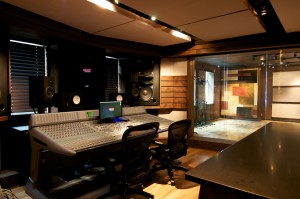
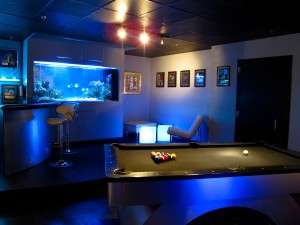
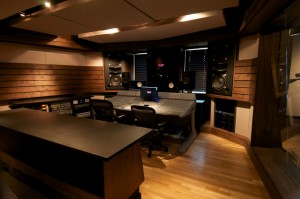
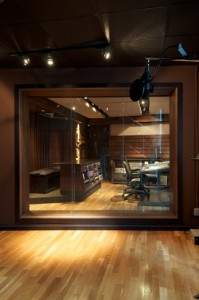
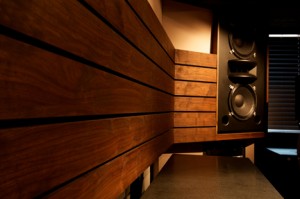
Dave Malekpour
July 29, 2011 at 10:20 pm (13 years ago)Glad our speakers are going to 11,000! We are always proud of our speaker installs, but this is the first to include our custom drivers. They have broader frequency response and higher power handling then TAD drivers. Thanks for the mentioning Professional Audio Design!
Dave Malekpour
President
Professional Audio Design, Inc
Kirt Hamm
August 19, 2011 at 5:47 pm (13 years ago)Great to see that a historic studio like Quad is making such a huge investment in it’s revitalization! The new studio is incredible a great blend of new and vintage technologies. It’s exciting to learn that our graduate Glenn Baughmann plays an important part in the studio success. All of us at the Conservatory of Recording Arts & Sciences wish you much continued success.
Kirt Hamm
Administrator
Conservatory of Recording Arts & Sciences
Karmik Mike Stein
November 3, 2017 at 11:47 pm (6 years ago)i worked there for Lou Gonzales from 1983 to 1985 ……. the rooms were great back then ……glad to see the legacy continue ……..